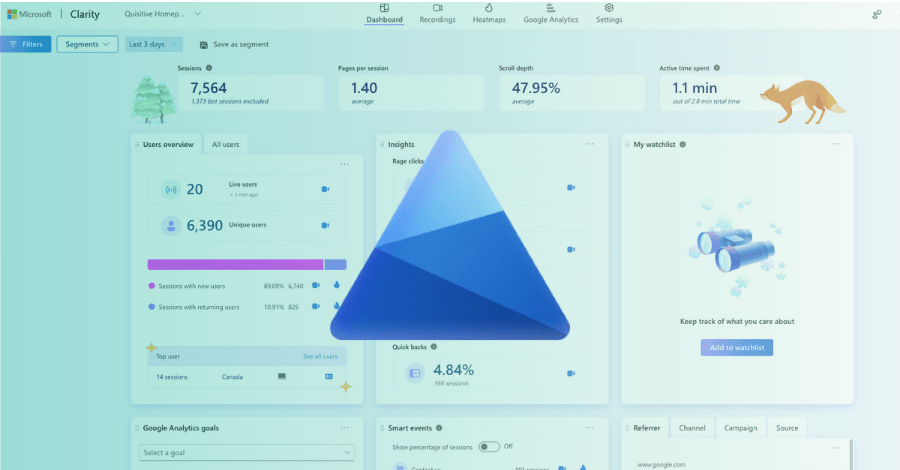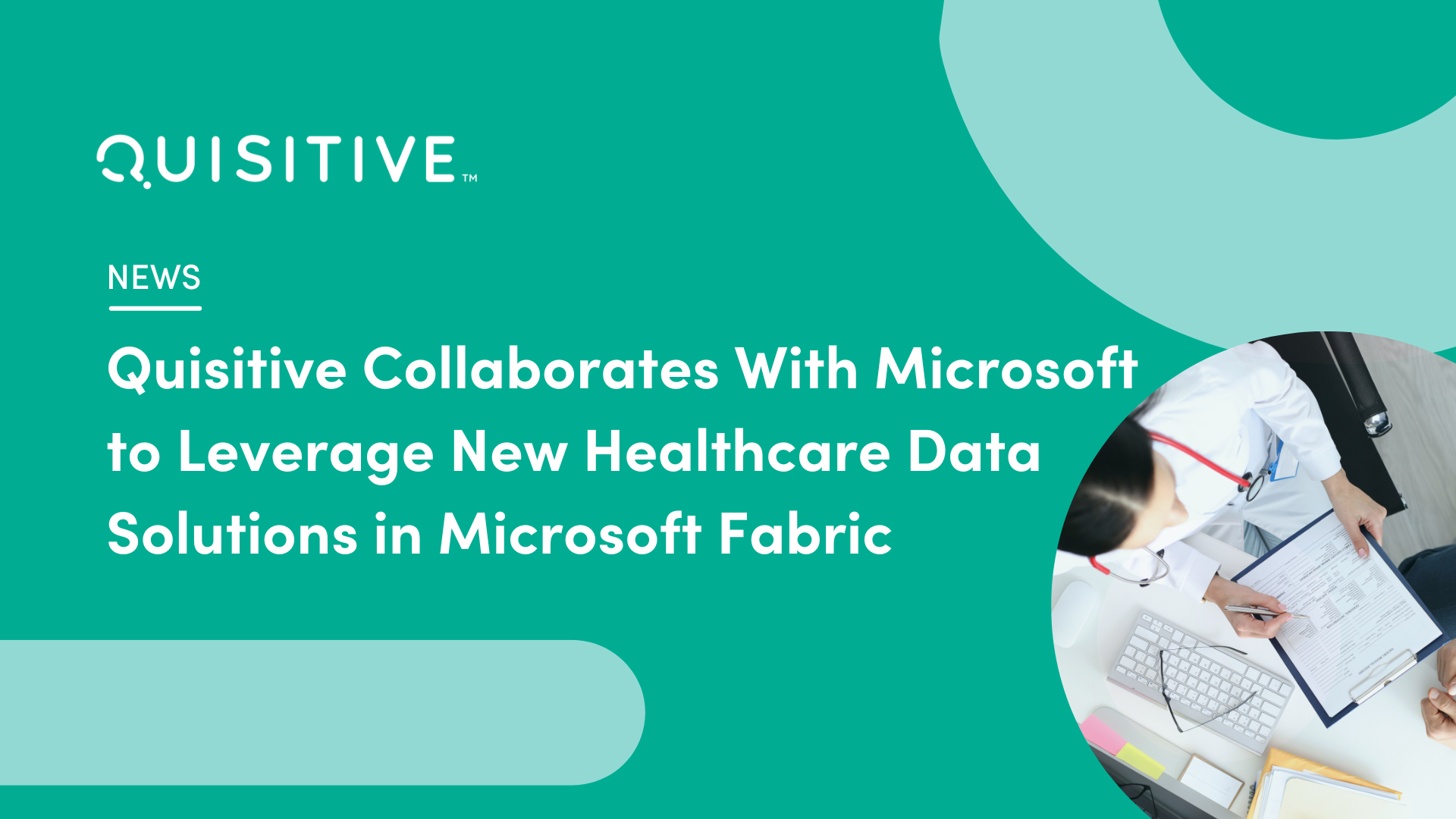In my experience, when organizations look to migrate their data to the cloud, the first thing to understand is where they are on the ‘spectrum of cloud knowledge’. At one end of the spectrum, they have no idea where to start. With the incredible variety of technology, terms, and services out there, clients can be overwhelmed with how to move forward. At the other end of the spectrum, some organizations have a very clear idea of where they want to go and how they want to get there, and they simply can’t get there fast enough. And of course, many organizations are somewhere in between.
Wherever an organization is on the spectrum, Quisitive’s On-Ramp to Azure Data is a great solution.
While that might seem counterintuitive, On-Ramp to Azure Data (ORTAD) effectively, and efficiently meets a client’s needs. How? Because regardless of where you are on the spectrum of knowledge, it can help jump-start or fast track your entry into the data and analytics world. A client can start from scratch from a data expertise point of view, and end up with a solid platform in an incredibly short period of time.
To understand how we can make this happen, let me describe what the ORTAD program is, and why it’s such a successful approach for organizations across multiple verticals.
Our Approach
Built on best practices using proven cloud adoption methodologies, tools, and resources, On-Ramp to Azure Data helps clients simplify and accelerate their move to the cloud. It uses a prescriptive approach that helps insulate the client from the friction of architecting, engineering, building, governing, and securing their Modern Data Platform in Azure, leveraging ‘Infrastructure as Code’ via Azure DevOps to quickly deliver a production-ready, best-practice-based platform. Equally importantly, the program gives the client’s data teams the opportunity to have hands-on experience with the tools and services within the platform, working with their own data in their own environment through a series of highly interactive labs over a four-week period.
Let’s walk through the program from Week 0 through to Week 4.
‘Week 0’
Why Week 0? Because with the OnRamp to Azure Data program, we place a clear division between the initial planning, discovery, and build phase, and the hands-on ‘working with your data’ phase, which for most clients is where the ‘fun stuff happens’. So we ensure that we get through any infrastructure hurdles we might encounter during the platform build in Week 0, prior to the ‘fun stuff’ in Weeks 1-4.
Analysis & Design Sessions
The first activities that occur in Week 0 are the Analysis and Design Sessions (ADS). In ADS 1, it’s all about you and your organization. First, we work to understand your current landscape: what are the data sources and types, tools, platform and vendors, reporting capabilities, team skillsets, etc. Then we gain an understanding of the business and IT priorities for your data environment. We break out the critical success factors for the next 30 days, 90 days, and a year from now, which not only crystallizes your long-term thinking but helps us to wrap our arms around the scope of the ORTAD program.
It’s often during this very first part of the process that we’ll uncover gaps in skill, experience, and expertise within the organization. This is a great opportunity for you to start thinking about some key decisions. Do you upskill current employees? Do you need to hire outside of the organization to fill in knowledge gaps? Or do you choose to outsource some or all of this expertise via Managed Services through an organization like Quisitive? Regardless of your choice, this is often a pivotal moment in your thinking.
By the end of ADS 1, we aim to have everything we need to come back in ADS 2 to talk about four key areas of focus:
1. The 30-, 90- and 365- day plans
By the end of ADS 1, we usually have a pretty clear view of what the immediate, medium and long term goals of the client are. While the scope of the ORTAD program is focused on the first 30 days (What are the critical success factors for you the client? What are the key themes we will focus on?), we also want to make sure that the program is preparing and enabling the client for what comes next – the first 90 days following the program, and beyond. So we spend some time in ADS 2 to collectively agree on a set of business ‘Use Cases’ that are tangible, meaningful, and achievable within the program’s timeframe.
2. Reference Architecture
Following ADS 1, our Architecture team takes what they’ve heard about the existing and desired future states for the client’s data environment, and develops a reference architecture based on these requirements. Part of the ‘magic’ of the ORTAD program is that all of the major services and resources that make up Microsoft’s Azure Data environment have been incorporated into Quisitive’s ‘Infrastructure as Code’ codebase. Need a Data Lake to land your data in? Toggle the feature flag to include it. Is Synapse Analysis Studio needed? Toggle the flag. We walk you through what will be deployed, and what each of the components is for. Depending on your exposure to Azure, we include some ‘Azure 101’ to help you get up to speed with the key concepts.
3. An initial Cost Consumption Model, based on the Reference Architecture
Yep, I know. I wish everything was free, too. But alas, Azure is a consumption-based service like all the major clouds out there. Our goal is to take the mystery out of the charges so that you have a clear understanding of what charges to expect and how to effectively monitor and control your costs.
4. A plan for the hands-on labs in Weeks 1-4
As I mentioned, once we get through Week 0, the fun stuff can start. We design a set of four hands-on labs for your data team, built around the scope and Use Cases that we agreed on in our 30/90/365 planning. During ADS 2 we review these labs with you and fine-tune as required to make sure we’re focused on exactly the right things.
Once we’ve worked through these four key areas, we conclude ADS 2 with a look at immediate next steps to start the platform deployment process.
(Still Week 0): Build and Deploy the Platform
The next step is all about platform deployment. We work with your infrastructure, networks, and security teams as needed to get the pre-requisites in place for us to build and deploy the Azure Data platform in your subscription. Did I mention that our Infrastructure as Code includes all of the infrastructure components you need for an enterprise-class platform? Things like RBAC security, Key Vault, Policies, Blueprints, ARM Templates, Alerting, etc. We’ve got you covered; and all of this codebase is yours at the end of the program, including an extensive set of documentation and how-to guides.
Weeks 1-4
Now we’re into the fun stuff! Weeks one through four are all about the hands-on labs and Use Case execution. As I mentioned, these labs are tailored to your specific requirements, but typically we’ll spend time on data ingestion and the establishment of pipelines, defining and security landing zones for the data, and then the integration and transformation of the data so that your data consumers can start consuming it. We generally focus on one or two use cases with specific data sources through the 30 day period, with the aim of providing the team with hands-on experience with each of the major components in the platform.
We also encourage your team to play with the platform outside of the formal labs to extend their knowledge, leveraging our architects and engineers for informal help and knowledge-sharing through the thirty days.
Why On-Ramp to Azure Data works
By the end of the On-Ramp To Azure Data program, you’ll have a rock-solid data platform to truly jump-start your data journey, and a team equipped with the training and knowledge to start that journey with you. You will also have built a strong relationship with a trusted partner in Quisitive to help you along the way.
Every client who participates in the On-Ramp to Azure Data program benefits from learning from and working alongside experts who live and breathe data and analytics day in and day out and can guide them along the way. Plus, Microsoft funds a percentage of the program cost, which means the barrier to entry is minimal.
The four-week On-Ramp to Azure Data program leaves clients with a best practice-based platform to get started with, and perhaps best of all, it gets team members excited about the technology.
Are you ready to get started? Learn more about the On-Ramp to Azure Data program here.

;)


